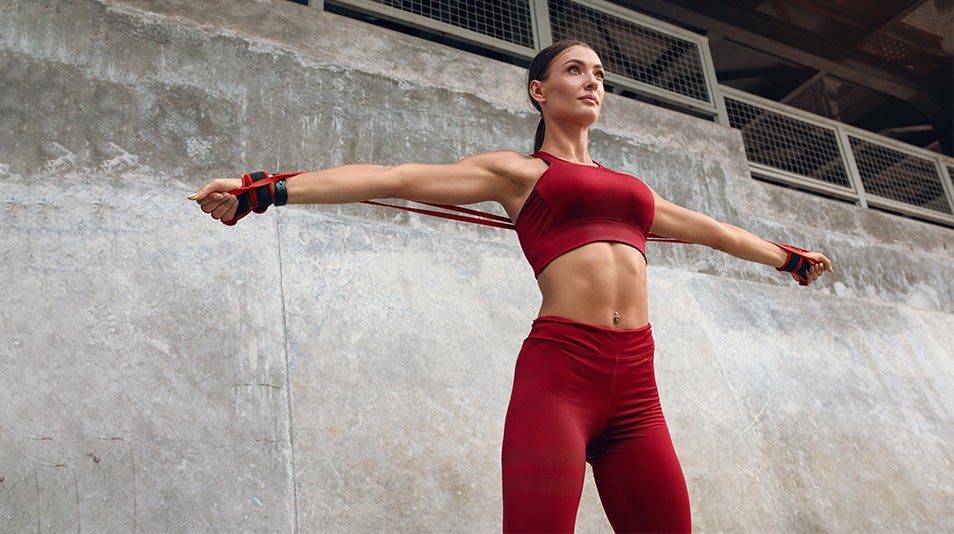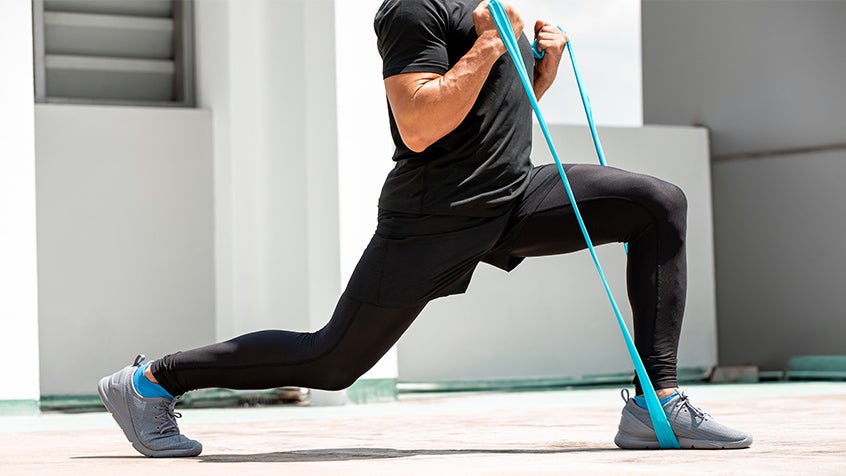How important is prep work before a workout?
4 min read
We often put so much time and energy into writing a workout before we hit the gym, but we don’t often put that same focus into the preparation before the actual session. So, what does it take to prepare for a session? Myrik, Personal Trainer and Fitness Coach at Virgin Active St Leonards, shares his tips on the best way to prepare for your session.
"Failing to prepare is preparing to fail.”
Here are Myrik’s five key principles for the best way to prepare for a workout.
Mindset prep
It all starts in the mind. Get yourself in the right mindset by mentally preparing for your session. Just as you would for work the next day, think about what needs to be done and how you will achieve it.
Goal setting: What do I want out of today's session? Movements, reps, sets, volume? To stay focused, to be mindful, to take it slow? To get your heart rate to a certain peak? Whatever your goals are, note them down so you feel as though you are walking in the gym on a mission.
Visualisation: This can be found to feel a bit silly at first, however, top athletes use imagery extensively to build on their strengths and help eliminate their weaknesses. Imagery or visualisation works best when you imagine yourself in ‘real-time’, setting the scene of what you will be performing while incorporating all senses that come with it (see, smell, sight, sound, touch) in a positive nature. It will keep you motivated and build your confidence. Give it a try!
Tracking: Ever read a journal from when you were young and it is as though another person was once writing in it? Keep notes of your progress, because we are forever growing, evolving, learning, and becoming a better version of ourselves. You’ll be surprised how far you have come. It doesn’t have to be a fancy novel, it could be as simple as adding notes in your phone.
Recharge
Sleep is essential to workout preparation and recovery. It gives time for your body to recover and your muscles to replenish their glycogen (energy) levels. It is important that we recharge our brains, as rest provides us with alertness, and with alertness, we are motivated to perform better. Pick one or two nights per week and use that as a time dedicated to get a big rest.
Fuel the body
Fuelling up for any activity is essential to make the most out of your workout. Skimming on nutrition can reduce muscle mass, lower bone density and cause fatigue. It’s important to eat a well-round diet with plenty of fruits and vegetables, lean proteins, healthy fats, and whole-grain carbohydrates. Carbohydrates, you say? Don’t be afraid, we promise carbs are your friend. They provide essential energy to fuel your body before, during, and after your workout.
Hydration
Let’s be honest, there has always been a time in our lives where we forgot to drink enough water. It can cause headaches, fatigue, confusion, slow reaction times, muscle cramps, and even mood changes. More than half of our bodies are made up with water. What does this tell us about how much water should you be drinking? As a general rule, men need about 10 (250ml/cup) cups of fluids and women 8 cups per day. Here are some tips to stay hydrated throughout the day:
- Buy a big fancy water bottle: keeping a big water bottle next to you all day is a simple reminder to drink up.
- Drink water first thing: keep a glass next to your bed so it’s first thing you see when you wake up.
- Add some spice: mix it up with calorie-free flavouring, such as cordial or sugar-free. drinks. The fruity infusion can help make your water intake more appealing and tastier.
- Tune in: listen to your body and focus on the signals it is giving you. Don’t be afraid to check the colour of your urine, if it is a dark yellow, you may be dehydrated.
Movement Prep
We’ve finished our mindset prep, we are well rested, our tummies are full, and we’re feeling hydrated. What’s next? Time to get physical! Some would call this a ‘warm-up’, but Myrik has dug a little deeper. He has broken it up into three main categories that have helped him and his clients to get the most out of their session.
Release:
Time to release any tension your body is holding onto. This can be done with a foam roller or a trigger point release. Try to do this each time before starting your workout and focus on the areas that are causing you grief or need some extra attention.
Mobilise:
Mobility drills are perfect to loosen your joints to optimise your range of motion. These could include fire hydrants, windmills, book openers, or jefferson curls. Many mobility drills can also get your heart rate up, so it is the perfect way to warm up before your session. If you enjoy moving your body in this way then you should check out one of our Yoga Classes, which focuses on mobility and flexibility for vitality.
Activate:
It is important to activate (or ‘fire up’) the muscles you are focusing on in your session to help engage those big muscles and reduce risk of injury. For example, on leg day, you can start with a resistance band to activate your glutes. This could include banded bridges, crab walks, or donkey kicks. You will feel less stiff and become more efficient throughout the movement.
Lift off
You’re ready! The next time you decide to hit the gym or join a class, try adapting Myrik’s extensive knowledge on workout preparation and see what your mind and body is capable of. Create a routine that works best around your lifestyle and make it unique to you.
If you want to hear Myrik talk more about this subject, you can listen to our Virgin Active Mind’s Podcast where he is a guest speaker on the episode “How important is prep work before a workout?”.
You can find Myrik at Virgin Active, St Leonards or follow him on socials @myrik_fp.
Related articles
Nourish
3 min read
Food mind games: how stress affects your appetite
Unwind
3 min read
Are you burnt out?
Nourish
3 min read
For wellness that lasts, ditch the trends and guilt
Enjoying our blog?
Sign up to our newsletter to get updates on training, healthy living, news and events.






